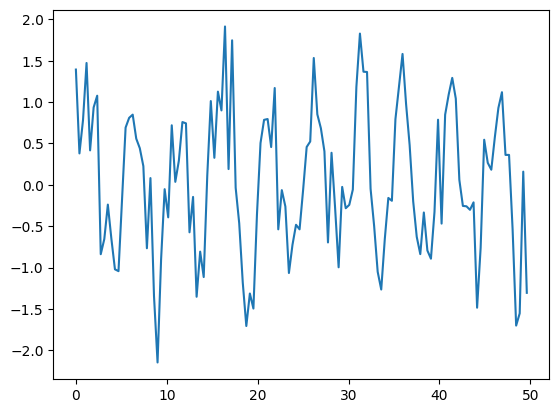In-class Example: A Frequency Filter#
Let’s see how we can use an FFT to filter high-frequency noise.
We’ll need our DFT functions:
import numpy as np
import matplotlib.pyplot as plt
def dft(f_n):
"""perform a discrete Fourier transform"""
N = len(f_n)
n = np.arange(N)
f_k = np.zeros((N), dtype=np.complex128)
for k in range(N):
f_k[k] = np.sum(f_n * np.exp(-2.0 * np.pi * 1j * n * k / N))
return f_k
def idft(F_k):
"""perform an inverse discrete Fourier transform"""
N = len(F_k)
k = np.arange(N)
f_n = np.zeros((N), dtype=np.float64)
for n in range(N):
f_n[n] = (1/N) * np.sum(F_k * np.exp(2.0 * np.pi * 1j * n * k / N)).real
return f_n
Now let’s create a sine wave and add lots of random noise
def f(x, nu=0.2):
rng = np.random.default_rng()
return np.sin(2.0 * np.pi * nu * x) + 0.5 * rng.standard_normal(len(x))
Let’s look at the function now
xmax = 50
N = 128
x = np.linspace(0.0, xmax, N, endpoint=False)
fig, ax = plt.subplots()
f_n = f(x)
ax.plot(x, f_n)
[<matplotlib.lines.Line2D at 0x7f559ba42270>]

Let’s try to remove this noise by working in frequency space. Here’s our plan:
Transform our function to frequency space
Plot the power spectrum to see the structure with frequency
Zero out the Fourier components of any low-amplitude modes in the power spectrum
Transform back to real space


